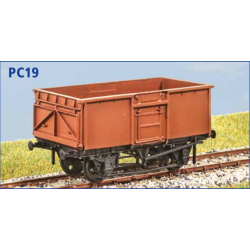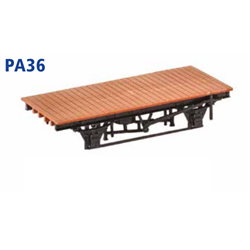This is not as difficult as you would think. Normally you would dip your transfer in warm water to help remove it...
No products
Product successfully added to your shopping cart
There are 0 items in your cart. There is 1 item in your cart.
Search Tips
End of year opening times
If you select next day delivery, please note deliveries are not made on New Year's Day.
The shop in Sandown is closed on New Years's Day and closing at 2.30pm on New Year's Eve.
Tuesday 30th: 10am to 4.30pm - Wednesday 31st: 10am to 2.30pm - Thursday 1st: closed - Friday onwards: 10am to 4.30pm.
What is a vacuum brake?
The vacuum brake is a type of braking system that was historically used on many railway vehicles before more modern systems such as the air brake became widespread. It operates using the principle of atmospheric pressure and a vacuum created in the brake system to apply braking force. This system was especially common in Britain and in many parts of the British Empire during the steam and early diesel eras. While it has mostly been phased out on mainline railways today, vacuum brakes are still found on heritage railways, making them a familiar sight for many.
In a vacuum brake system, a vacuum is created in a pipe that runs along the length of the train, connected to a brake cylinder on each vehicle. When the vacuum is maintained, the brakes are released, allowing the train to move freely. However, when the vacuum is reduced or destroyed (either manually by the driver or automatically in an emergency) air pressure forces the brake pads against the wheels, slowing the train down. The effectiveness of the braking depends on how much the vacuum is reduced, offering a certain level of control.
Understanding the function and appearance of vacuum brakes is important if you're aiming for accuracy in recreating locomotives and rolling stock from the era when these systems were in use. Many British locomotives and carriages from the steam and early diesel periods featured visible vacuum brake pipes and cylinders. If you're modelling a railway from this period, especially for heritage layouts, adding accurate representations of vacuum brake equipment will enhance the realism of your model.
One of the distinctive visual features of vacuum-braked rolling stock is the brake pipe that runs along the underframe, often connected between vehicles with flexible hoses. These hoses and pipes are often modelled in miniature on models.
Another point of interest is the fact that vacuum brakes were not only used on passenger trains but also on freight wagons. Many British freight wagons were fitted with vacuum brakes, especially in the later part of the 19th century and into the 20th century. This allows you to add variety to your model trains, depending on the type of rolling stock you're representing. Accurate vacuum brake fittings on freight wagons can be an important detail when modelling historical trains.
In conclusion, the vacuum brake is a fascinating aspect of railway history that provides an opportunity to add an extra layer of historical authenticity to their layouts. By paying attention to the details of these systems, including brake pipes, hoses and cylinders, you can create a more realistic representation of British trains from the vacuum-brake era. If you're modelling heritage or historical layouts, understanding how these brakes worked and their importance in railway operation can greatly enhance the accuracy and appeal of your models.
Click here to receive the tips weekly in your mailbox. You can unsubscribe at any time.










